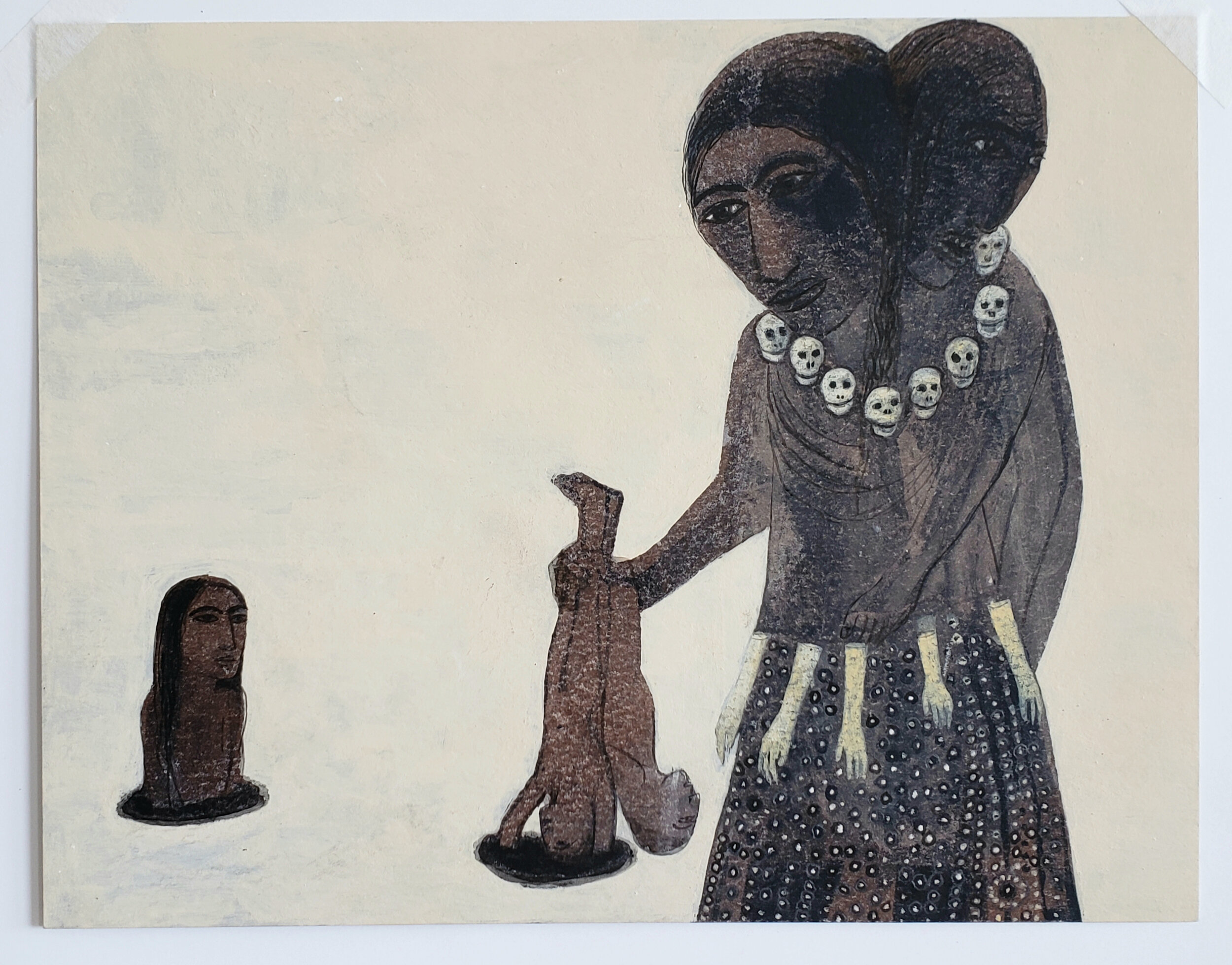
Ten Paintings
Samira Abbassy
Volume Two, Issue One, “Inhale/Exhale,” Visual Art
The subject of my work is based on how to reveal the figure as a whole human being with all of its psycho/emotional parts. The challenge is how to depict "a state of being" rather than objective portraits and how to incorporate the incorporeal, as though ‘breathing life into’, or ‘inspiriting’ the painted figure with life. My work can be described as autobiographical, perhaps even confessional. The canvas becomes a place of self-examination; “a mirror of inclusion,” a place to contextualize the Self and establish an identity. The central figure appears as an archetype rather than literal self-portraiture. I attempt to depict myself from the inside out, starting with how it feels to be me, or rather, how it feels to be human.
"Ghosts of Her Migration" uses the mirror image as a compositional device in a diptych format. This duality is the subject matter as well as a formal device. The mirror becomes a Psycho-emotional X-ray, looking into the (Jungian) Self. The mirror/ diptych reveals apposing realities from a myriad of possibilities: real /reflection, inside/ outside, breathing in / breathing out, then / now, truth / self-dilution. The figures begin as mirror images of one another, and as the painting progresses, they diverge, even though their differences are defined through the same motifs and patterns. The question posed: ‘Who would I have been if I had never emigrated, and what parts of myself remain untouched by the two migrations of my life?’
Samira Abbassy’s dreamlike paintings question how to illustrate the interior imaginings of the human mind. The Iranian-born, New York-based artist explores themes of immigration, generational trauma, as well as the dichotomy between the body and the self in her boldly colored canvases.
Abbassy’s visceral paintings grapple with the very act of portraying the human, depicting first and foremost the interior, psychological complexity. Take, for example, Disembodied Self: one nude loosely-painted female figure upholds the weight of what appears to be a bloodied, dismembered head with braids still tightly intact, as a head with a face paralleling the nude’s floats above the figure. Abbassy presents an image of destruction: the blood-red emanates off the carcass and is etched throughout the piece. The woman’s head is afloat, peering above the nude and into the interior, butchered parts she respectfully buttresses. There is certainly a rawness to Abbassy’s Disembodied Self; the materiality of the physical body is viscerally on display — much unlike our own breath, which is uncolored, invisible, and cannot be presented.
Bound by her Fate depicts a portrait of an adhering female figure with two faces for her body and her braids set in her mouth. Atop the two-faced figure’s bright red dress, the other portion of her braids lay on her chest and bind together, with four miniature heads swinging off. Abbassy’s painting is part of a series of hair-swallowing and gagging images, through which the artist explores the act of ingestion or inhalation. Here, Abbassy questions what it is we inhale. Rather than air, in Bound by her Fate, the double-headed female figure breathes in her hair –– a part of her own self.
Yet, how does one inhale aspects of oneself? Abbassy’s wildly surreal environments express how this very action paradoxically becomes a mode of externalizing one’s private mental states by reflecting upon the stories, mythologies, fears, and struggles that simultaneously choke us and allow us to breathe.
- Rachel Rosin
"Bound by her Fate” is part of a series of hair-swallowing and gagging images. The phrase: “I can’t swallow this” came to me after an upsetting incident where I had to accept an unacceptable dictum from a difficult family member. The painting translates this dilemma into a literal, physical impossibility, so the viewer experiences it viscerally. This became a trope in the paintings, covering difficult or impossible situations which need to be ingested, inhaled, in order to make sense it. It alludes to an alchemical idea which Jung calls ‘the process of individuation’ whereby difficulties have to be incorporated into the Self and overcome in order to become a whole human being. In alchemical iconography, the Peacock symbolizes the swallowing of poison which gives rise to the iridescence of its tail.
"Disembodied Self” shows the dichotomy of the in/corporeal, inside/outside realms.
"Reincarnated Fears” is a family portrait revealing generational trauma through the use a fiery pattern engulfing the painting. Intruding from outside a gun points at the matriarch’s head, as she protects her child, hinting at domestic, or ethnic violence.
"The Accusing Mirror" shows two dueling parts of the self confronting themselves through the psychological realm of the mirror.
"Beast of the Plague" is part of the ‘quarantine series’ made at home during lock-down. I was grappling with how to visualize the pandemic with reference to medieval paintings of the plague and jinns in Persian manuscripts.
“Spring,” also part of the ‘quarantine series’ showing an isolated bird /human with a singular flower in a desert, overlooked by an ominous, double-headed human bird.










